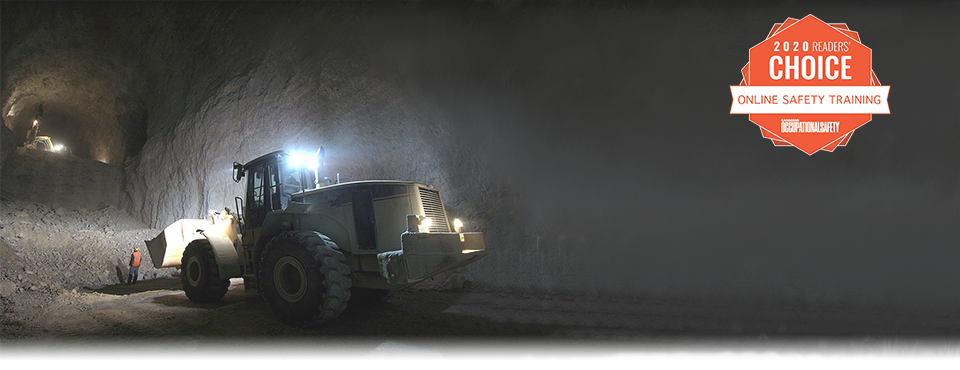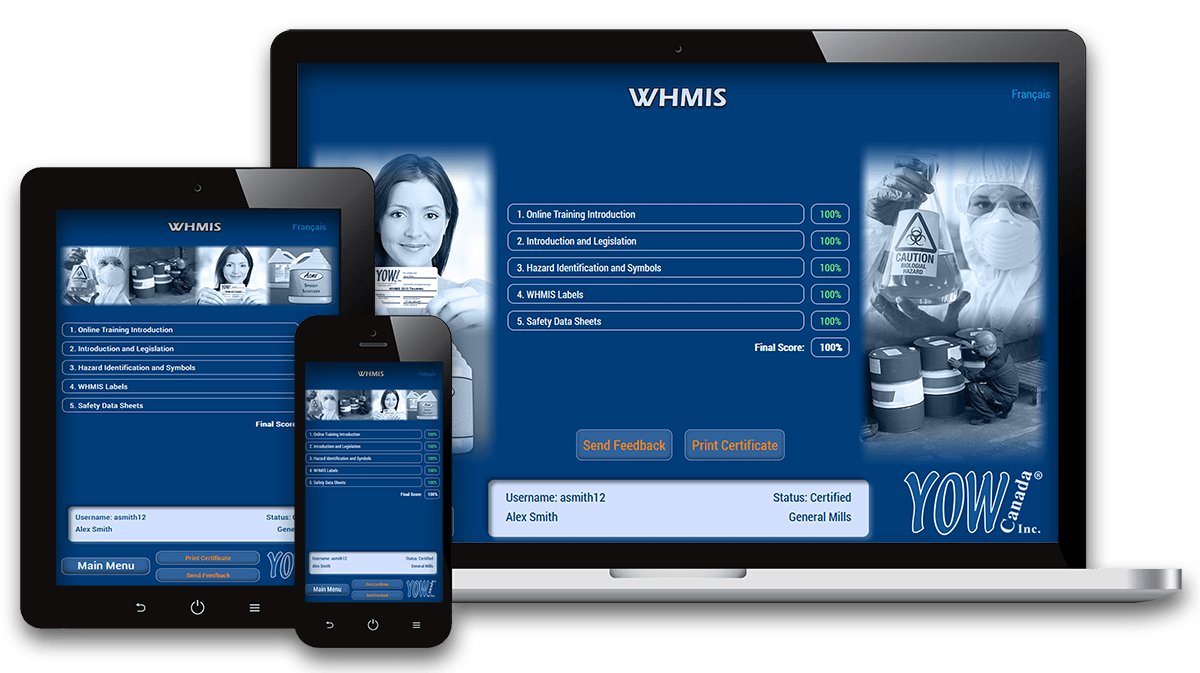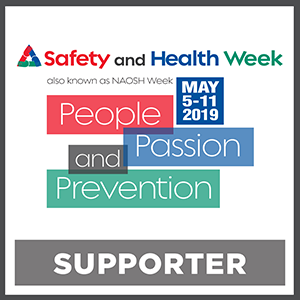
Confined Space Awareness Training
Expand All | Collapse AllGeneral Confined Space Awareness Training Questions
What is Confined Space Awareness?
Legal definitions have various wordings, but essentially a confined space is:
- A fully or partially enclosed space with restricted access; and
- not designed or constructed for human occupation; and
- hazardous because of the lack of adequate and safe air inside; or
- hazardous because of the work that will be done inside
Do I need a Confined Space Awareness Course?
If you have a confined space on-site, all workers should be trained in the hazards of confined spaces.
General training (such as this course) will cover the legislation, recognizing a confined space, recognizing the hazards and how they are assessed and the contents of an Entry Plan.
Additionally, all confined space training should include some hands-on training with the safety equipment including the personal protective equipment and safety harnesses.
Workers with emergency rescue responsibilities will need training related to the rescue.
Who is responsible for Confined Space training and Confined Space education?
Regardless of the source of training or how it is provided to workers, the employer has the duty to ensure it is adequate to protect the health and safety of the workers who work in or around the confined space.
YOW Canada's Confined Space Course is one method of training.
Additional 'Hands-on' training on the specific equipment and procedures to be used will be required.
How often do I need Confined Space Awareness Training?
General training must be given before anyone works with a confined space.
Confined Space Awareness should be repeated when there are significant changes to the policy or program or when circumstances indicate training should be repeated such as when policy or procedures are not being followed.
The training must be reviewed if there are any changes in the circumstances that may affect the safety of a worker or when provincial regulations require it.
Ontario, for example, requires an annual review of a company's confined spaces training program.
Consult with your industry's provincial safety association or Worker's Compensation Board for details on when re-certification is required. Click here
How can we comply with the Regulations?
You need an Confined Space Awareness Program that:
- You need an Confined Space Awareness Program that:
- Identifies all confined spaces;
- Identifies the hazards in the confined spaces; and
- Controls the hazards during an entry by having a written Entry Plan, providing
- Makes all employees aware of the details surrounding a 'written rescue plan' for each jobsite.
If I change employers/jobs, do I have to retrain?
The onus is on the employer to ensure that his or her staff is properly trained for the job. Because you can never be too sure of previous training, it's recommended that new employees take a CSA course, including site-specific training.
Can I take this course as an individual?
Absolutely! If you are taking this course as an individual, simply enter your name in the area for "Company Name".
Can I take one of YOW's CSA courses and then train my own workers?
YOW Canada's CSA course is not intended or designed for trainers and we do not recommend that it be used to train a trainer. In order to reap the full benefits of this course we recommend that each trainee complete CSA course themselves. This also ensures that each employee receives CSA certificate.
Who signs my certificate?
The “employer” signature should be signed by the direct supervisor of the employee. The “employee” signature should be signed by the actual trainee. If you are self-employed you must sign as both the “employee” and the “employer”.
What needs to be included in a Confined Space Awareness training program?
Both general and site-specific training are required.
YOW's Confined Space Awareness Course is general training that covers the legislation, how to recognize Confined Space Awareness and how to address it.
Practical Entry Plan specific training is also required to cover the particular equipment used to enter the confined space safely and the response procedures for any emergency in the confined space.
What if we contract out the confined space work?
If your employees are not entering the space, the contractor is responsible for the training required, but you are still responsible for ensuring the regulations are being met.
You must produce an Entry Plan, and ensure the work is being performed safely according to the Entry Plan.
You must have a Co-ordination Document signed with the contractor that details everyone's responsibilities.
What if more than one company is involved in the entry?
If employees of more than one company are entering the confined space, then the 'Head employer' (the employer contracting for the services of other employers or independent contractors) must prepare a co-ordination document that details the duties and responsibilities of each worker under the Entry Plan.
How is compliance with the Confined Space Regulations monitored?
Compliance activities relating to confined spaces are conducted by the provincial, territorial and federal agencies responsible for occupational health and safety (OHS).
These OHS agencies conduct compliance programs for confined space training requirements established under their respective legislations.
What is the difference between the various levels of confined space training (ie: level 1,2,3 and 4)?
YOW Canada's Confined Space Awareness course is considered a level 1 course.
That means it's an awareness course that teaches employees the hazards of confined spaces and basic information on working safely with and around confined spaces.
Most employees will require additional training that teaches them more about their specific role in the confined space.
Level 2 training is typically for entrants and attendants.
This type of training would include using the equipment, reviewing the personal protective equipment required such as Self-Contained Breathing Apparatus (SCBA), Supplied Air Respirators (SAR) and Cartridge Respirators.
This type of training would include using the equipment, reviewing the personal protective equipment required such as Self-Contained Breathing Apparatus (SCBA), Supplied Air Respirators (SAR) and Cartridge Respirators.
Employees should also learn about problems that could arise while wearing respiratory protection and the actions necessary for safe usage.
It would also include learning non-entry rescue tactics.
Employees should learn methods to rig overhead anchors, using tripods and safety lines, retractable lifelines and winch systems, operating rope-based mechanical hauling systems and using remote casualty connection techniques.
Level 3 training is typically for the competent worker or supervisor.
This would be for persons required to do atmospheric testing in a confined space before the entrant enters. Employees should learn about air monitoring regulations regarding oxygen levels, lower explosive limits (LEL) and other permissible exposure limits of toxic fumes, vapours or gases and ventilation standards.
They should learn about instrument operation, maintenance and proper interpretation of readings and documentation.
Level 4 training is typically for the rescuers.
This training can be very extensive depending on the type of rescue that a worker may encounter.
CSA Online Training:
How does the CSA online course work?
YOW Canada's CSA online course works in a 3 step process:
Step 1 - Register:
Once the courses have been purchased all trainees must be registered for the course. Registration is done online through the Training Administration page. You can also contact YOW Canada by phone at 1-866-688-2845, email or by fax to have us register your trainees. Once registered, login and password information is emailed to the administrator.
Step 2 - Take the Course:
Trainees can log in at any time to start their training and can log in and out as many times as necessary to complete their training. The course is about 2 hours in length. It includes audio, video, animation and interactive exercises. It makes training fun and educational!
Step 3 - Print your Certificate:
Once completed, the wallet and wall-mount certificates are emailed to the administrator. The certificates are printable and accompanied by a Performance Record that displays how the trainee performed throughout the course (scores for each chapter etc.).
How long does it take to complete the online course?
The average trainee can complete this CSA online course in about 2 hour(s).
Can I log into the course more than once?
Yes, you can log in and out of the course as many times as necessary in order to complete your training. When you log back into the course, you will be brought back to your last visited page. You have up to 1 year to complete your course.
Do I have to complete the course in one session?
No, you may log in and out as many times as necessary to complete your course. Your work will be saved.
What will I receive when I have completed my training?
Once you complete the course, a pdf document will be available for you to download and print. This document is also emailed to the Training Administrator. This document will include your Performance Record and certificate. The certificate includes your name, your employer's name and the date you certified.
How will I receive my training certificate?
The certificate will be automatically available for printing once you complete the course. It will also be emailed to the Training Administrator. If you are self-employed, the certificate is sent to your email address directly.
I am the training administrator. How can I monitor my trainee's progress?
As an administrator, you have access to the Course Administration site where you can monitor and track each trainee's progress. You can see quiz scores, view certificates, activate accounts and more.
You will receive a copy of all training certificates by email as soon as the employee has completed the course.
You can also be able to re-register any employee's who's certificates have expired.
Why should I choose online training versus classroom training?
Online training with YOW Canada is fast, easy and effective. Some of the benefits of online training include:
- Training is available 24/7, on any computer with an internet connection.
- Trainees can log in and out to complete their training at their convenience anytime from anywhere, so scheduling is never a problem.
- Complete tracking capabilities through a Training Administration site allow employers to manage the training.
- Training certificates are emailed to the Training Administrator instantly upon completion of the course - no waiting.
- Dynamic video, illustrations, photos, audio and text help to meet the needs of different types of learners.
I have dial-up internet. Can I still take the course?
Yes. The course is available for dial-up users. Please be aware, however, that it may take more time to download. If you'd like to see a demo to test the speed, please click here to view a demo of this course. to view a demo of this course.
What are the technical requirements for taking this online course?
- A computer, tablet, or smartphone with an internet connection
A High-speed internet connection is recommended. - A Web browser
(Such as Internet Explorer, Firefox, Google Chrome or Safari). You should be using the latest version of your chosen web browser.
How do I Purchase a course?
Purchases can be done online, by phone at 1-866-688-2845 or by fax.
You may pre-purchase courses to be used at a later date. There are no expiry dates for pre-purchased courses.
What other courses does YOW Canada offer?
Please visit our product menu for all of our course offerings.
Questions About YOW Canada
What does the "YOW" in YOW Canada stand for?
YOW Canada's offices are located in Ottawa, Ontario and Y-O-W are the international call letters for the Ottawa Airport. Plus, we think it's a catchy name that's easy to remember.
For more information about our company please visit the Contact Us page.
Back To CSA Course Outline
YOW Canada Refund Policy
Provincial Regulation Contacts
Course Outline:
- Confined Space Introduction & Regulations
- WHMIS Roles & Responsibilities
- Hazards of a Confined Space
- Pre-entry Requirements, including:
- Confined Space Program
- Hazard Assessment & The Entry Plan
- Training Requirements & Record Keeping
- Entering a Confined Space, including:
- The Entry Permit & On-site Rescue
- Energy / Materials Isolation & Control
- Atmospheric Safety & Ventilation
- Interactive exercises, tests & certificate
La manière judicieuse d'apprendre!
En ligne, partout et en tout temps.
Obtenez votre certificat aujourd'hui!



